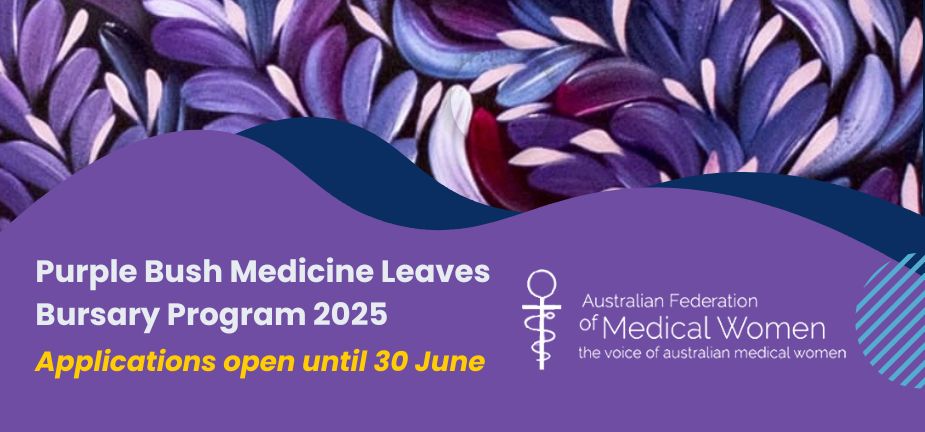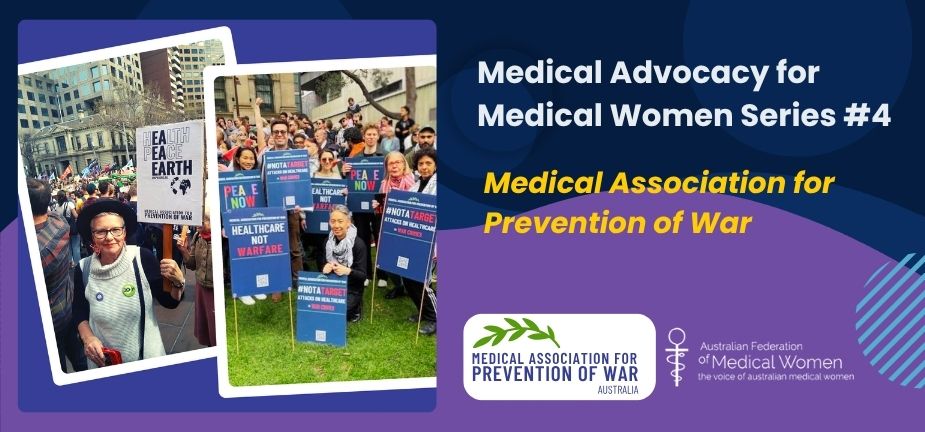In this AusDoc article, Dr Magdelena Simonis discusses the delays in reaching an Endometriosis diagnosis including the dismissal of women’s symptoms by health professionals, poor public awareness of the disease, misinformation regarding menstruation, alongside stigma and cultural attitudes towards menstruation. However, GPs are well placed to manage endometriosis, as this is where symptomatic people will present.
‘Endometriosis: Why GPs can help transform the lives of women’
There are several reasons for the delays in reaching a diagnosis and they include dismissal of women’s symptoms by health professionals, poor public awareness of the disease, misinformation regarding menstruation, alongside stigma and cultural attitudes towards menstruation.
But one of the most satisfying aspects of being a GP is caring for a patient and finding that, with the right support, their symptoms have improved or miraculously disappeared, meaning they can get on with life as normal.
To recap, endometriosis is an inflammatory condition characterised by oestrogen-sensitive lesions of endometrial tissue that occur outside of the uterus.
It affects one in nine Australian women – hence its importance as a health issue – starting from menarche to menopause, although symptoms can occasionally recur post-menopause, when hormone replacement therapy is initiated. It also affects some non-binary people.
Presenting complaints range from dysmenorrhoea, pelvic pain, bloating, heavy menstrual bleeding, dyspareunia, irritable bowel symptoms, pain or bleeding on defaecation, urinary symptoms, fatigue and, in up to 30%, subfertility.
Women and non-binary people who present with symptoms have faced the frustration of not feeling heard or of having their symptoms dismissed, resulting in average delays of 7-12 years before a diagnosis is made.
It is not surprising that mental health issues frequently ensue.
If we consider what this translates to for school-aged girls, if not addressed early, one in 10 will experience pain that affects their schooling, career path, social relationships and participation.
The national economic burden of endometriosis is estimated to be $7.7 billion annually: measured in absenteeism, loss of social and economic participation and use of the health system.
The National Endometriosis Plan (2018) was instigated in acknowledgement of the lack of services and size of the need in order to better support women, girls and people with this disease.
Some of the outcomes of this process include the review of the endometriosis guidelines (2021) and the establishment of Endozone, an evidence-based consumer website.
Endometriosis is now classified as a chronic disease.
Not only does diagnosis requires persistence on the part of the doctor, it also requires persistence from the patient.
Women might refrain from talking about their periods with their doctor, and doctors who are told about them have historically tended to normalise endometriosis symptoms and even misdiagnose them for lack of understanding around the complexity of the disease.
Patients who don’t feel heard are more likely to refrain from raising the same issues at subsequent visits.
An added complication is that, although definitive diagnosis of endometriosis can be made only by laparoscopy, not all people with endometriosis will require this surgery, especially if their symptoms are medically manageable in general practice with NSAIDs, combined oral contraceptive pills or long-acting reversible contraceptives (LARCs), along with lifestyle advice, meditation, diet and exercise.
Good practice includes taking a thorough medical and menstrual history, performing a physical examination, screening for PID and ordering a pelvic ultrasound as a minimum for a preliminary diagnosis. This can all be done in the primary care setting.
It is important to know that a normal pelvic ultrasound does not exclude endometriosis but excludes other forms of pathology and provides a baseline.
The likelihood that endometriosis is present increases if the condition improves with a trial of therapy, as outlined above, or if these treatments have failed.
Referral to a gynaecologist or tertiary centre for further investigation and laparoscopy is warranted if symptoms persist despite these initial interventions.
This means GP follow-up forms a key part of good management.
Endometriosis presents with a wide range of symptoms that can fluctuate and vary, making the choice of diagnostic pathway complicated.
Ultimately, this is determined by the concerns raised by the patient and the doctor’s level of suspicion for endometriosis.
Consider a 22-year-old woman who presents saying: “I feel bloated all the time, and it’s worse with my period. Do you think I’m allergic to gluten?”
Or a 35-year-old who says: “I’ve been trying to fall pregnant for one year and nothing has happened.”
Or a 28-year-old whose complaint is: “My periods are really getting to me, and I feel exhausted all the time.”
Not all endometriosis cases will present with descriptions of painful, heavy periods.
Unless doctors are aware that symptoms severe enough to stop a person from going to school or work, or that interfere with a person’s activities of daily life, fall outside the acceptable range and need to be asked about, the diagnosis will be delayed or missed.
The general lack of knowledge regarding endometriosis among the profession stems predominantly from the lack of education provided to medical students and doctors in training around menstruation, women’s health issues and pelvic pain.
Comprehensive online training for GPs and health professionals — developed by the Endometriosis Online Learning Steering Committee — can be now be accessed through the RANZCOG website.
Completion of this course will equip the GP with enough information to diagnose and manage patients with suspected endometriosis.
It also outlines the importance of non-pharmacological pain relief, lifestyle modification and the need for multidisciplinary care, much like other chronic diseases.
Useful resources are also available on the Jean Hailes Foundation website.
As with most inflammatory conditions, there is no absolute cure for endometriosis yet; however, treatments have improved and LARCs, if introduced early on, can significantly reduce menstrual bleeding, pain and even disease progression.
GPs are well placed to manage endometriosis, as this is where symptomatic people will present.
Management begins with listening to your patient, taking them through the Raising Awareness Tool for Endometriosis, performing a physical examination and undertaking baseline investigations.
This should then lead into a conversation around the benefits of combined oral contraceptive pills or LARCs for management of symptoms in addition to contraception.
This is followed by the introduction of treatment and, if a LARC is agreed upon, performing or arranging the insertion.
As I said, one of the most satisfying aspects of being a GP is reviewing your patient months later to hear that their symptoms have improved or disappeared and they are now living their life as normal.
The differences we can make can be fundamental.
More information:
- Women’s Health Week
- Department of Health: National Action Plan for Endometriosis; Jul 2018.
- Healthdirect Australia: endometriosis
- RANZCOG: Australian clinical practice guideline for the diagnosis and management of endometriosis; 2021.
- EndoZone
- RANZCOG Endometriosis eLearning Module
- Jean Hailes
- RANZCOG: Raising Awareness Tool for Endometriosis
Dr Magdelena Simonis
Associate Professor Simonis is also a member of the Endometriosis Online Learning Steering Committee, co-lead of the RACGP Red Book women’s health chapter and a member of the RACGP Expert Committee – Quality Care.
(article and photo credit – AusDoc)
Associate Professor Magdalena Simonis AM is a Past President of the AFMW (2020-2023), former President of VMWS (2013 & 2017-2020) and current AFMW National Coordinator (2024-2026). She is a full time clinician who also holds positions on several not for profit organisations, driven by her passion for bridging gaps across the health sector. She is a leading women’s health expert, keynote speaker, climate change and gender equity advocate and government advisor. Magda is member of The Australian Health Team contributing monthly articles.
Magdalena was awarded a lifetime membership of the RACGP for her contributions which include past chair of Women in General Practice, longstanding contribution to the RACGP Expert Committee Quality Care, the RACGP eHealth Expert Committee. She is regularly invited to comment on primary care research though mainstream and medical media and contributes articles on various health issues through newsGP and other publications.
Magdalena has represented the RACGP at senate enquiries and has worked on several National Health Framework reviews. She is author of the RACGP Guide on Female Genital Cosmetic Surgery and co-reviewer of the RACGP Red Book Women’s Health Chapter, and reviewer of the RACGP White book
Both an RACGP examiner and University examiner, she undertakes general practice research and is a GP Educator with the Safer Families Centre of Research Excellence, which develops education tools to assist the primary care sector identify, respond to and manage family violence . Roles outside of RACGP include the Strategy and Policy Committee for Breast Cancer Network Australia, Board Director of the Melbourne University Teaching Health Clinics and the elected GP representative to the AMA Federal Council. In 2022. she was award the AMA (Vic) Patrick Pritzwald-Steggman Award 2022, which celebrates a doctor who has made an exceptional contribution to the wellbeing of their colleagues and the community and was listed as Women’s Agenda 2022 finalist for Emerging Leader in Health.
Magdalena has presented at the United Nations as part of the Australian Assembly and was appointed the Australian representative to the World Health Organisation, World Assembly on COVID 19, by the Medical Women’s International Association (MWIA) in 2021. In 2023, A/Professor Simonis was included on the King’s COVID-19 Champion’s list and was also awarded a Member (AM) in the General Division for significant service to medicine through a range of roles and to women’s health.










